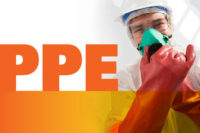Why is respiratory protection one of OSHA’s most cited standards?

Credit: OHD
Every year at the National Safety Council (NSC) Safety Congress and Exposition, OSHA releases its top ten most cited standards violations of the previous fiscal year. As we near this next release (covering October 1, 2022– September 30, 2023), it’s a great time to dive into one of the most common violations, respiratory protection (1910.134). This standard was third on the list in 2022 with 2,527 citations and second in 2021 with 2,185 citations, representing an increase of just over 300 violations year to year despite it placing lower on the list. It is likely that respiratory protection standard citations will be among the most cited again this year.
One of the best ways to break down what is being cited is to look at what is required. The use of respiratory protection in the workplace is not as easy as buying respirators and handing them out. It requires the development of a documented program that must include, according to OSHA:
- Procedures for selecting respirators for use in the workplace;
- Medical evaluations of employees required to use respirators;
- Fit testing procedures for tight-fitting respirators;
- Procedures for proper use of respirators in routine and reasonably foreseeable emergency situations;
- Procedures and schedules for cleaning, disinfecting, storing, inspecting, repairing, discarding, and otherwise maintaining respirators;
- Procedures to ensure adequate air quality, quantity, and flow of breathing air for atmosphere-supplying respirators;
- Training of employees in the respiratory hazards to which they are potentially exposed during routine and emergency situations;
- Training of employees in the proper use of respirators, including putting on and removing them, any limitations on their use, and their maintenance; and
- Procedures for regularly evaluating the effectiveness of the program.
It’s easy to see how daunting a process this can be, and every one of these items can be much more complicated than it may seem. For instance, within respirator selection, an employer must determine the inhalation hazard(s) and amount of exposure likely through an assessment. Once the hazard is quantified, the type of respirator can be identified (air purifying, air supplying, etc.).
Employers will need to ensure the respirator (and filtration media) they select is appropriate for the hazard(s) and has the correct assigned protection factor for the concentration faced. OSHA offers guidance on the selection of the correct respiratory protection on their website once you have quantified the exposure. The employer must provide a sufficient selection of models and sizes to accommodate the range of wearers. They must also consider any worker or worksite characteristics that may impact respirator selection and use. This is only one single requirement in the development of a respiratory protection program as outlined by OSHA.
The second and third items were the two most frequently cited violations within respiratory protection during the height of the COVID-19 pandemic (https://www.osha.gov/sites/default/files/covid-citations-guidance.pdf). A medical evaluation ensures a wearer is healthy enough and capable of using a respirator during their job duties. There is a mandatory medical questionnaire available from OSHA, and it must be reviewed by an appropriate healthcare professional (https://www.osha.gov/sites/default/files/publications/OSHA3790.pdf). The most cited issue here was simply employers not providing the evaluation before implementing the use of respirators. This aspect of the required program is straightforward but clearly may require outside resources (e.g., a healthcare professional to review) and have an associated cost.
Within the fit testing requirement, the most cited issue was, yet again, it simply not being provided. Fit testing can be quite an undertaking. The employer can choose to do this in-house or hire an outside contractor, but in either case they will need to have some familiarity with the approved methods of fit testing and what is required by the standard.
Two types of testing
There are two types of fit testing, qualitative and quantitative, and they both have benefits and limitations. Qualitative testing relies on a wearer sensing a test agent. There are four OSHA approved methods of qualitative testing, taste-based saccharin and Bitrex, smell-based banana oil, and reaction based irritant smoke. Qualitative is relatively inexpensive, but the approved protocol is longer, the test is subjective, and there is no automatic documentation.
Quantitative testing uses a machine to measure leakage into the respirator. There are three OSHA approved methods, generated aerosol, ambient aerosol, and controlled negative pressure (CNP), however, ambient aerosol and CNP are the only ones readily available commercially. Ambient aerosol counts particles in the air and particles in the respirator while it is worn. CNP uses negative pressure and measures the air that leaks in. Quantitative testing requires a machine with annual maintenance costs, but is very fast, automatically documents each test and allows for quick testing on new employees or current employees requiring testing in a time-sensitive manner.
Both quantitative methods calculate a number, called a fit factor, to quantify the fit. This calculation is different for the two methods, but they both have the same reference passing fit factor according to OSHA. The reference passing fit factor is typically based on whether the respirator is a half mask (100) or a full face (500). There are some nuances here, but this is a good guideline for OSHA compliance. A passed qualitative test is assigned a 100 fit factor, so a further limitation here is that it can only be used when 100 is the appropriate reference passing fit factor.
Items 4-9 are about procedures for the development, implementation, and continuation of the respiratory protection program as well as the training required. These are all involved processes that often connect to other aspects of safety and health management. Even without diving more deeply into those items, it’s clear that the Respiratory Protection standard requires a fair amount of time and attention and should not be taken lightly.
Looking for a reprint of this article?
From high-res PDFs to custom plaques, order your copy today!






